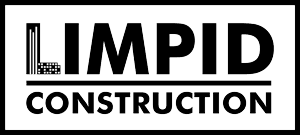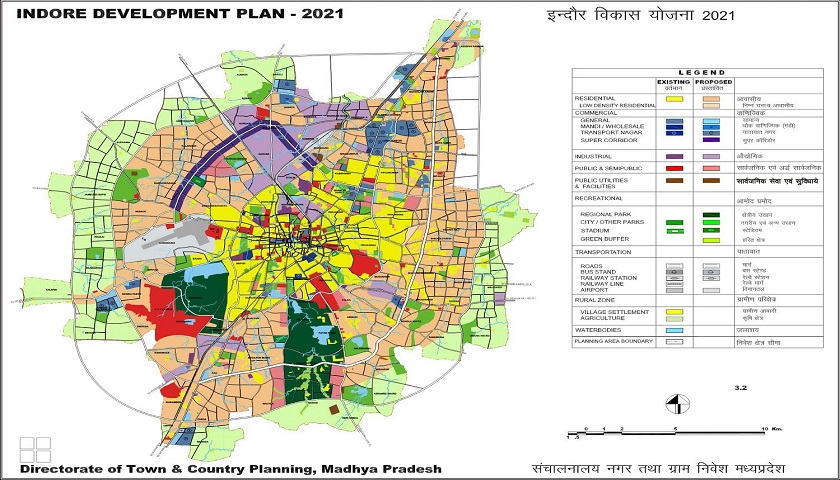Indore continued to top the government’s clean city survey list for the fourth time in 2020, the Madhya Pradesh (MP) city is yet to get a development plan (DP) that would establish the ground rules for its future development. Currently, the city is being developed under the Indore Master Plan 2021. At a time when most areas kept under the green zone in the city have seen large-scale residential settlements, both, organized and unorganized, it is important to draft a new DP for Indore before the tenure of 2021 expires.
Indore Development Plan 1991
Of the 214.10 sq km of land that the city is spread over, 12,145 hectares of land were reserved for various development purposes under the Indore DP of 1991. According to the government records, only 72.5% development target was achieved under the 1991 DP. For housing, for example, a land area of 5,060 hectares was allocated for residential development, between 1974 and 1991. However, until 2005, only 4,660 hectares had been developed. Interestingly, Indore saw its population numbers increase by three times during 1975-2005. According to government estimates, of the nearly 25 lakh people who live in Indore, an estimated five lakh lived in slum-like conditions till 2001. For recreational purposes, 1,417 hectares of land were allocated, while only 290 hectares of land were developed for this purpose, indicating execution of only 20.26% work till 2005.
Indore Development Plan 2021
With an aim to complete the unfinished work, the state government came up with the Indore DP, 2021 in 2008. The key objective of the 2021 DP was to encourage land-use methods that would not only promote commercial success for this expanding city but also protect it against environmental deterioration.
Key features of Indore Master Plan 2021
Land use: The 2021 DP was created, factoring in a population of 35.6 lakhs by the end of the term. Under the plan, it was established that 35,600 hectares of land had to be developed, to cater to this population. The plan envisioned 10 hectares of land for every 1,000 people. In the old plan, this ratio was envisaged at 9.7 hectares of land per 1,000 people.
| Purpose | Land allocation (in hectares) |
|---|---|
| Housing | 15,795 |
| Commercial | 2,610 |
| Industrial | 2,527 |
| Transport | 5,605 |
| Recreation | 4,817 |
| Public use | 2,693 |
Housing: Of the 50,525 hectares of total developable land, over 46% (15,795 hectares) have been kept for residential purposes. Till 2001, the city had a total of 2.7 lakh residences. It is expected to have a demand for 5.25 lakh homes by 2021.
Building development: For housing societies, the area of the land prescribed under the DP is at least 288 sq metres. In a housing society, at least 10% of the area should be dedicated to open spaces. An upper limit of 5% has been set, to make provisions for shopping centres in these housing societies.
Group housing: For group housing societies, the minimum area requirement has been kept at two hectares. The floor area ratio (FAR) for such societies is prescribed at 1:1.5. FAR is the ratio of the area of floor to the area of the plot on which a building stands. This means that the floor area of a building constructed on a 1,000-sq ft land should not exceed 1,500 sq ft.
In low-density residential areas, the minimum area requirement for developments has been kept at 1,000 sq metres, while the prescribed FAR is 1:0.15. While the height of the building is restricted at 7.5 metres (with a sloping roof), the population density has been prescribed at 48 people per hectare.
Transferable development rights (TDR): The DP also talks about TDR. It is an arrangement under which the government acquires land and partially compensates the owners, by way of issuing a certificate, which the owner can use or trade in the market. All city master plans in India currently have provisions for TDR-based realty developments.
Sewage: Despite the fact that Indore is the cleanest city in India, only 35% area in the city has underground sewage pipelines. Apart from proposing a new underground sewage pipeline system, the DP talks about setting up a new sewage treatment plan, as well. These provisions have been made, keeping in view an estimated city-level population of 41 lakh people by 2025.
Rainwater harvesting: The plan suggests that rainwater harvesting be made mandatory in high-rise buildings and existing residences.
Author- Sarbojit Dutta
Civil Constructions, Home Interiors & Renovations!
To know more about our team and our services, please click here
To read more of such interesting blogs, please click here


